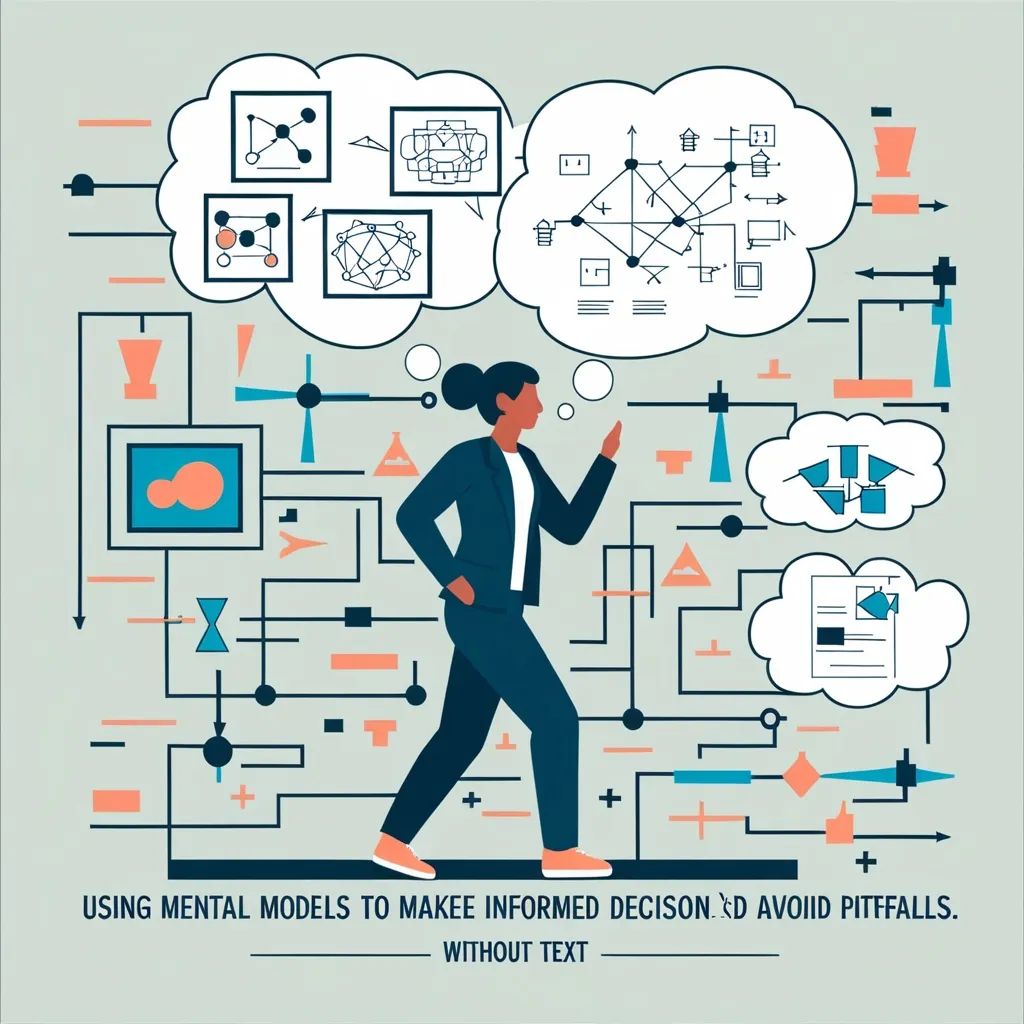When it comes to making decisions, many people heavily rely on their intuition or gut feelings, but this can often lead to less-than-ideal outcomes. There’s actually a smarter approach to decision-making: using mental models. These are frameworks that help us think more clearly, make better-informed choices, and avoid common snares.
What Exactly Are Mental Models?
Mental models are simple frameworks that help us understand the complexities of how the world operates. Think of them as maps that point out critical information while ignoring unnecessary details, making it easier to process information and reason things out. These mental models are drawn from various fields like physics, engineering, psychology, philosophy, and economics, making them versatile tools for decision-making in various scenarios.
First Principles Thinking
One of the most potent mental models is first principles thinking, which involves breaking down complicated ideas into their basic elements to get to the core truths. Take Elon Musk, for example. When he wanted to start a space company, he realized rocket-building costs were ridiculously high. Instead of taking that at face value, he dismantled the concept into its raw materials, finding out that they were actually quite affordable. Understanding these first principles allowed him to build rockets more cost-effectively.
This same approach applies to different life aspects, like starting a business, learning a new language, or even shedding some pounds. Focusing on the essential elements helps you innovate and achieve your goals in better, more efficient ways.
Backward Chaining
Another handy model is backward chaining. Instead of starting from the beginning, start from your desired result and work your way backwards to figure out the necessary steps. For instance, if you aim to start a thriving business, consider the attributes of successful businesses and then work backwards to identify the steps to get there. This way, your actions will always be aligned with your goals.
Second-Order Thinking
Second-order thinking isn’t just about immediate effects; it’s about pondering the wider consequences of your actions. This involves thinking about how others might react to your decisions and how those reactions could influence the outcome. For example, if you decide to drop the price of your product, think about how competitors might respond and how that will alter your market stance. This helps you anticipate and prepare for different possible outcomes.
The Inversion Principle
The inversion principle is all about considering the opposite of what you want to achieve. Instead of asking how to succeed, ask how to fail. This can spotlight potential pitfalls that you need to evade. For example, if you’re launching a new business, ask yourself what could make it flop and then take steps to dodge those risks.
The Decision Matrix
A decision matrix is a great tool to evaluate different options based on various criteria. By listing your choices and the criteria you’re using to weigh them, you can make more informed decisions. Say you’re deciding between two job offers; you could create a matrix with criteria such as salary, work-life balance, and career prospects. This helps visualize the pros and cons of each option.
Scientific Method
Applying the scientific method to decision-making means coming up with hypotheses, testing them, and tweaking your approach based on the results. This encourages continuous improvement through experimentation. For instance, if you wish to improve your sales strategy, formulate a hypothesis about what will work best, test it, and adjust your approach based on the data you gather.
System 1 and System 2 Thinking
Knowing the difference between System 1 and System 2 thinking can also fine-tune your decision-making. System 1 is quick and intuitive, while System 2 is slower and more analytical. Recognizing when you’re leaning too much on intuition or overly scrutinizing can help strike a balance, enabling more informed choices.
Heuristics and Biases
Heuristics are mental shortcuts that enable quick decisions without deep analysis. While handy, they can also introduce biases. Being aware of these biases, like overconfidence or stereotyping, enables you to dodge common pitfalls and make more accurate decisions.
Using Mental Models Effectively
To make the best use of mental models, integrate them into your decision-making routine. A few handy strategies include:
- Create memorable phrases: Develop simple sayings that remind you of different mental models. For example, “keep some powder dry” might remind you to maintain a margin of safety.
- Use Socratic questions: Ask open-ended questions to encourage critical thinking and uncover underlying assumptions. This helps access the right mental models to guide decisions.
- Conduct retrospectives: Regularly review past decisions and projects to see what worked and what didn’t, helping you refine your decision-making over time.
Boosting Decision Quality
Mental models can drastically enhance decision quality by providing a structured approach to thinking and evaluating options. Using the right models grants clarity, fosters critical thinking, and enables more informed choices. Employing tools like a decision tree can help you weigh various factors, and game theory can aid in anticipating others’ reactions.
Steering Clear of Pitfalls
While mental models are incredibly useful, they can also lead to pitfalls if not applied correctly. Over-relying on a specific model without considering its limits or using a model unsuited to the context can result in poor decisions. Being mindful of these potential weaknesses is crucial for optimal decision-making.
Eliminating Blind Spots
In life and business, the person with the fewest blind spots generally wins. Blind spots lead to bad choices, so eliminating them means gaining better clarity. Shifting your perspective can uncover vital information and present new solutions. Think of each mental model as a different lens revealing unique aspects of a scenario.
Trust and Incentives
Understanding human nature is also pivotal for making better decisions. Trust plays a fundamental role in modern society, and incentives significantly sway our thinking. Realizing how incentives can distort our thought processes and how trust operates helps in making more informed choices.
Practical Examples
Let’s break it down with a practical example. Say you’re weighing up whether to invest in a new business venture. Using the first principles model, break the venture into its core components and evaluate each one. Then, compare different investment options with a decision matrix based on criteria like potential return, risk, and market demand. Lastly, apply the inversion principle to think about what could cause the investment to tank and take measures to mitigate those risks.
By using these mental models, you end up making a more informed decision that’s less likely to depend on intuition or biases.
Wrapping It Up
Mental models are powerful tools that can greatly enhance your decision-making. By understanding and applying these frameworks, you can think more clearly, avoid common traps, and make more informed choices. Whether it’s personal decisions or business moves, mental models help navigate complex situations with greater clarity and confidence. So, next time a decision looms, take a moment to consider which mental models could guide you to the best choice.






